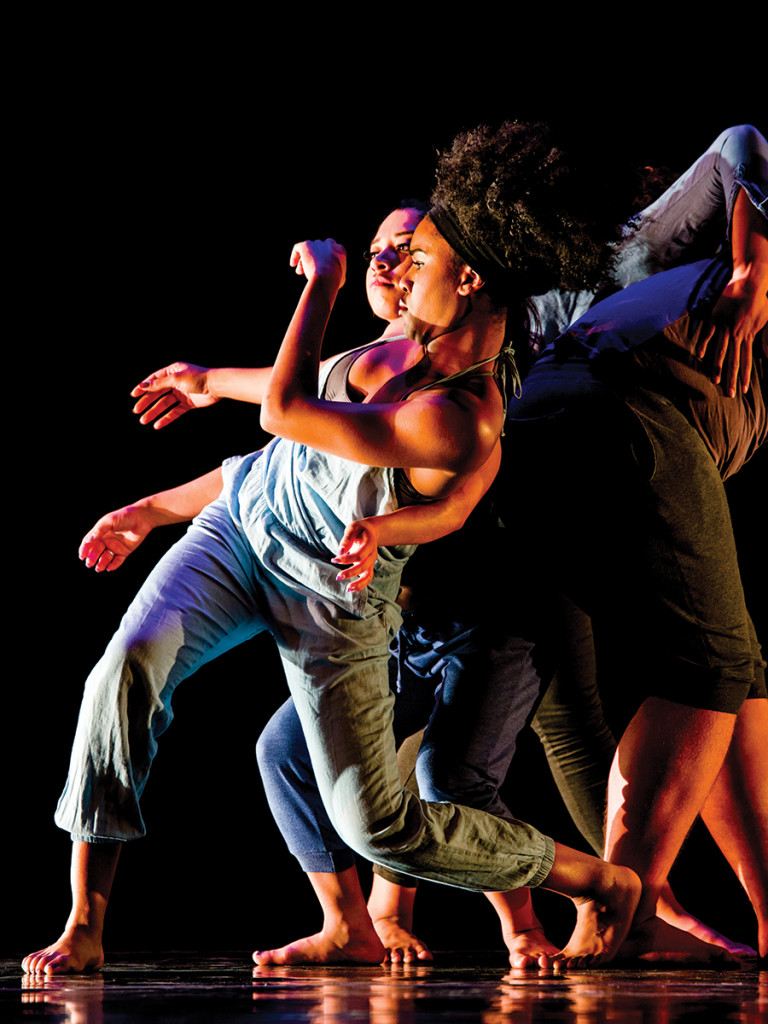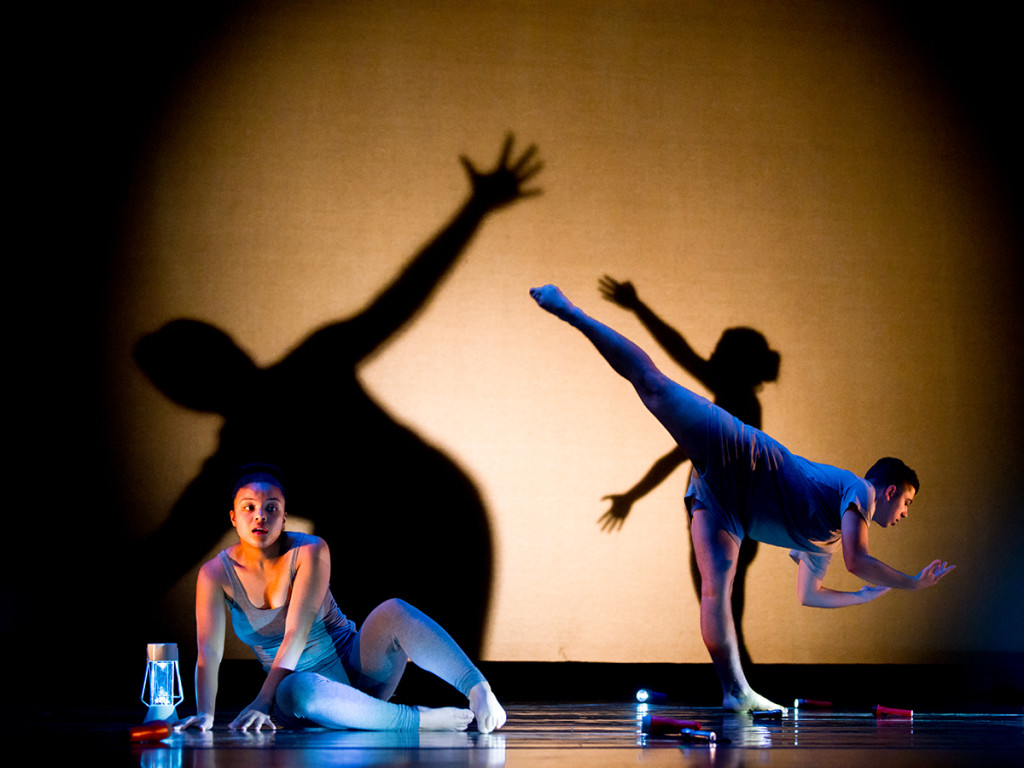
To many, modern dance seems like an oddity.
Many first-time viewers are confused when they see performers clad in unison colors and meshed together in a slow-moving huddle across the stage, no strict adherence to pirouetting or jumping occurring but hands and feet gliding over another’s to maintain the pulsating huddle. Many may only be familiar with the modern dancers in Taylor Swift’s “Shake It Off” music video, where they communicate dread or anxiety at her with dramatic faces and emotive gestures as she looks at the camera deeply confuzzled. She later describes the dance as one of “angst, extreme angst” (imagine “extreme” in all caps).
However, modern dance is a form that offers flexibility in expression as the student dancers and student choreographers demonstrated in this year’s UCR is Dancing event.
Held from March 3 to March 5, UCR is Dancing is the culmination of five quarters and long rehearsals that is showcased to the public. As a requirement from the UCR Dance Department, dance majors have to choreograph their own piece in a course series, which explains the unique composition and critical themes displayed. Maggie Sniffen, the assistant director of the event and a MFA candidate studying experimental choreography, described the range of these pieces: “One piece focused on modes of energy, while others focused on language barriers and others focused on movement.”
“All of them expressed different things and they used different modes of expression, but dance being the main one,” she said.
While art heavy in expression may come off as too subjective for some, it’s the subjective nature of the nine student-choreographed dances that allowed for the audience to connect with them, especially when the wit and grace of the choreography emphasized this.

With “This is Your Welcome,” the dancers cautioned the audience to not use any recording or electronic devices during the event with a skit-like approach. As they held their smartphones all about and giggled with one another over a taken selfie, the audience giggled as well, starting the show off on a funny note.
With only a brief intermission, all nine pieces were performed with professional ease in transitions, yet varied in their experimentation beyond just dance technique and style; choices in sound, speech, costume, background and space were all deliberately adding to the theme of each piece.
While the first piece choreographed by Charlene Chang utilized the dancers’ (Fion Wong and Kevin Wong) ability to speak two languages over one another to force the audience to experience a language barrier, Dilia Berganza and Areli Rodriguez’s co-choreographed piece entitled “Individual” with sloping font focused on the energy of the dancers through dynamic movement and lighting.
Amariah Wosczyk’s “Puzzle Pieces” began in complete darkness — only an odd sound to be heard — until a single dancer sitting on the floor was revealed with a spotlight, holding colorful tube-shaped instruments. Soon, other dancers wearing tap shoes strolled on the stage, snapping their feet and bopping the instruments on the floor or on each other to create their own rhythm. Courtney Boutwell’s “s c O p e” began in the same manner, but didn’t seek to create a lighthearted setting. Instead, lanterns and flashlights hued the dancers in soft light as they moved with a slowness matched by the music. Some would take turns silhouetting themselves behind a white backdrop and brighter light source, enlarging their figure and allowing the audience to focus on their movements.
No matter the different themes or different compositions, UCR is Dancing demonstrated the collaborative nature necessary to create and perform the pieces.
As student choreographer and fourth-year dance major, Rodriguez describes the working relations when “Individual” was in production: “We’re a very democratic group. We know that our dancers also put in work and thought and their being in the piece by working their bodies. We have to recognize that.” For her and Berganza’s piece, they encouraged the dancers to be independent in their movement: “We would give dancers a task or we teach them choreography, but we would also ask them ‘okay, so guys can you also do this, can you make a solo with the words agility, stamina and percussive, go!’ So, it was a give and take, it was always we give you stuff, but you guys will also create stuff.’”
Each piece succeeded due to not only the skill of the choreographer’s choices in composition, but also the dancers working with them and with each other to pull these pieces together. Each dancer built off or added onto another dancer, either with complimentary movements or with physical contact.
I think it’s only fitting that UCR is Dancing ended with the piece “Ou Topos” choreographed by Elizabeth Villalobos, because it required the conjoined effort of everyone to move across the stage in ever-moving huddle. All together, working as one.








